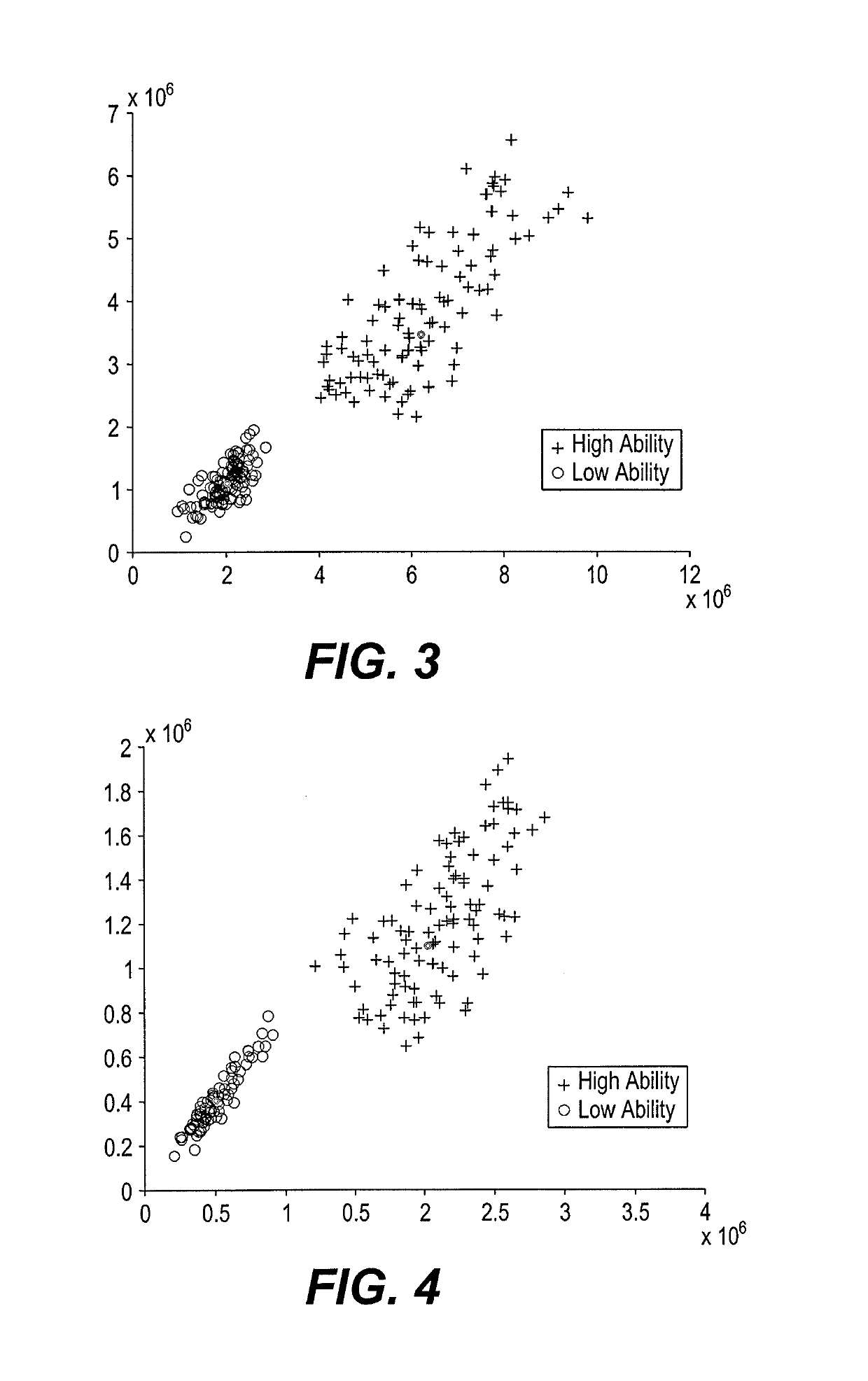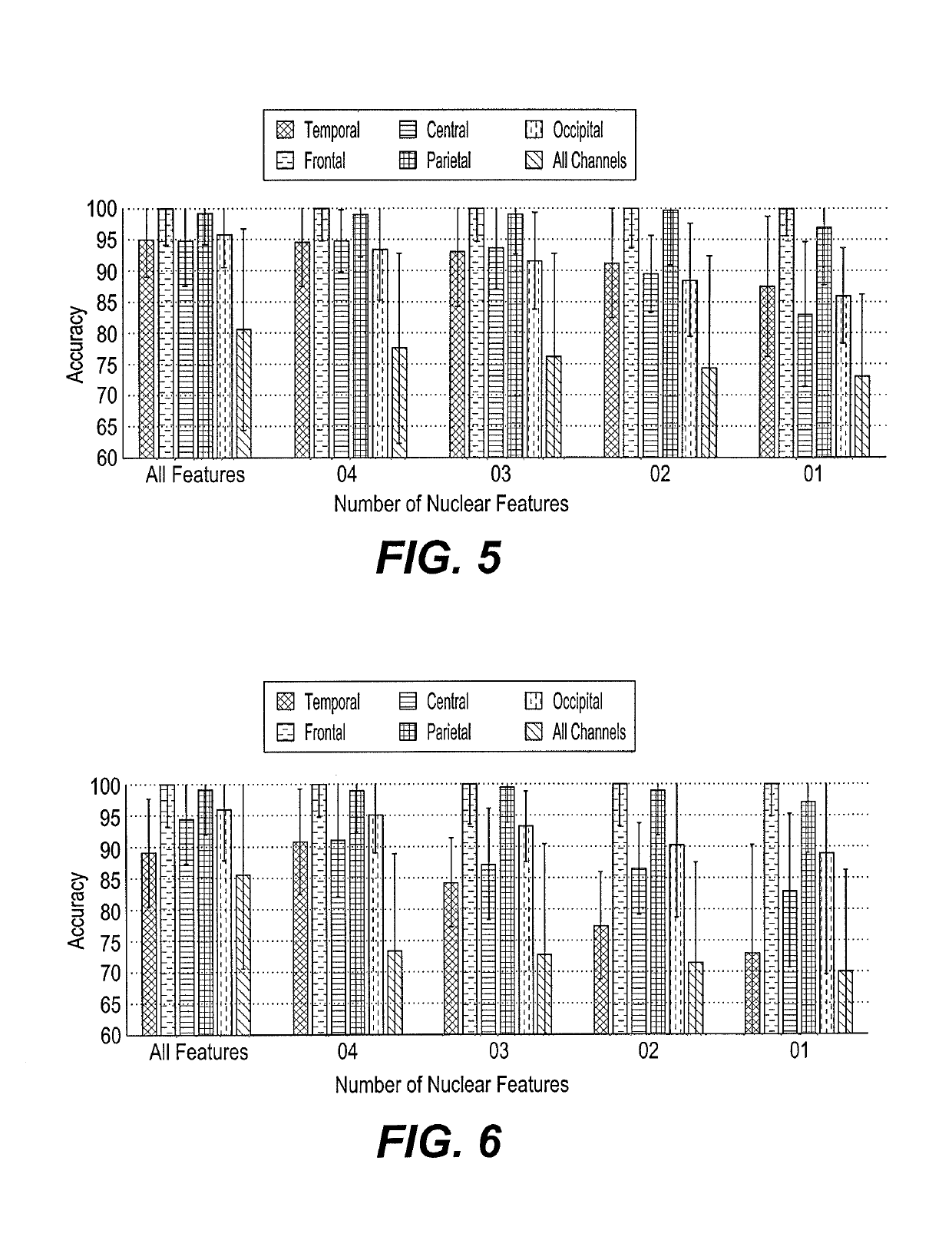Method of classifying raw EEG signals
a technology of electroencephalogram and signal, applied in the field of classification of electroencephalogram (eeg) signals, can solve the problems of classification accuracy, small dataset used, time-locked eeg signals utilized in these studies, etc., and achieve the effect of high ability, low ability, and high ability
- Summary
- Abstract
- Description
- Claims
- Application Information
AI Technical Summary
Benefits of technology
Problems solved by technology
Method used
Image
Examples
Embodiment Construction
[0022]A method of classifying electroencephalogram (EEG) signals uses a singular value decomposition (SVD) to extract nuclear features from EEG signals and a class means-based minimum distance classifier (CMMDC) to classify the nuclear features. The EEG signals are received from a set of EEG channels associated with an individual's brain (i.e., each EEG channel is associated with an electrode connected to the patient for recording EEG signals from the patient's brain). The nuclear features can be extracted from raw EEG signals i.e., EEG signals captured directly from the brain without any pre-processing. The projection of raw EEG signals captured from a certain brain region on a singular space by singular value decomposition (SVD) provides an amount of variances along different directions. Small value variances are due to artifacts and dominant (big value) variances represent the discriminative part of the signals. As such, dominant variances can be used to represent an event and a ...
PUM
 Login to View More
Login to View More Abstract
Description
Claims
Application Information
 Login to View More
Login to View More - R&D
- Intellectual Property
- Life Sciences
- Materials
- Tech Scout
- Unparalleled Data Quality
- Higher Quality Content
- 60% Fewer Hallucinations
Browse by: Latest US Patents, China's latest patents, Technical Efficacy Thesaurus, Application Domain, Technology Topic, Popular Technical Reports.
© 2025 PatSnap. All rights reserved.Legal|Privacy policy|Modern Slavery Act Transparency Statement|Sitemap|About US| Contact US: help@patsnap.com



